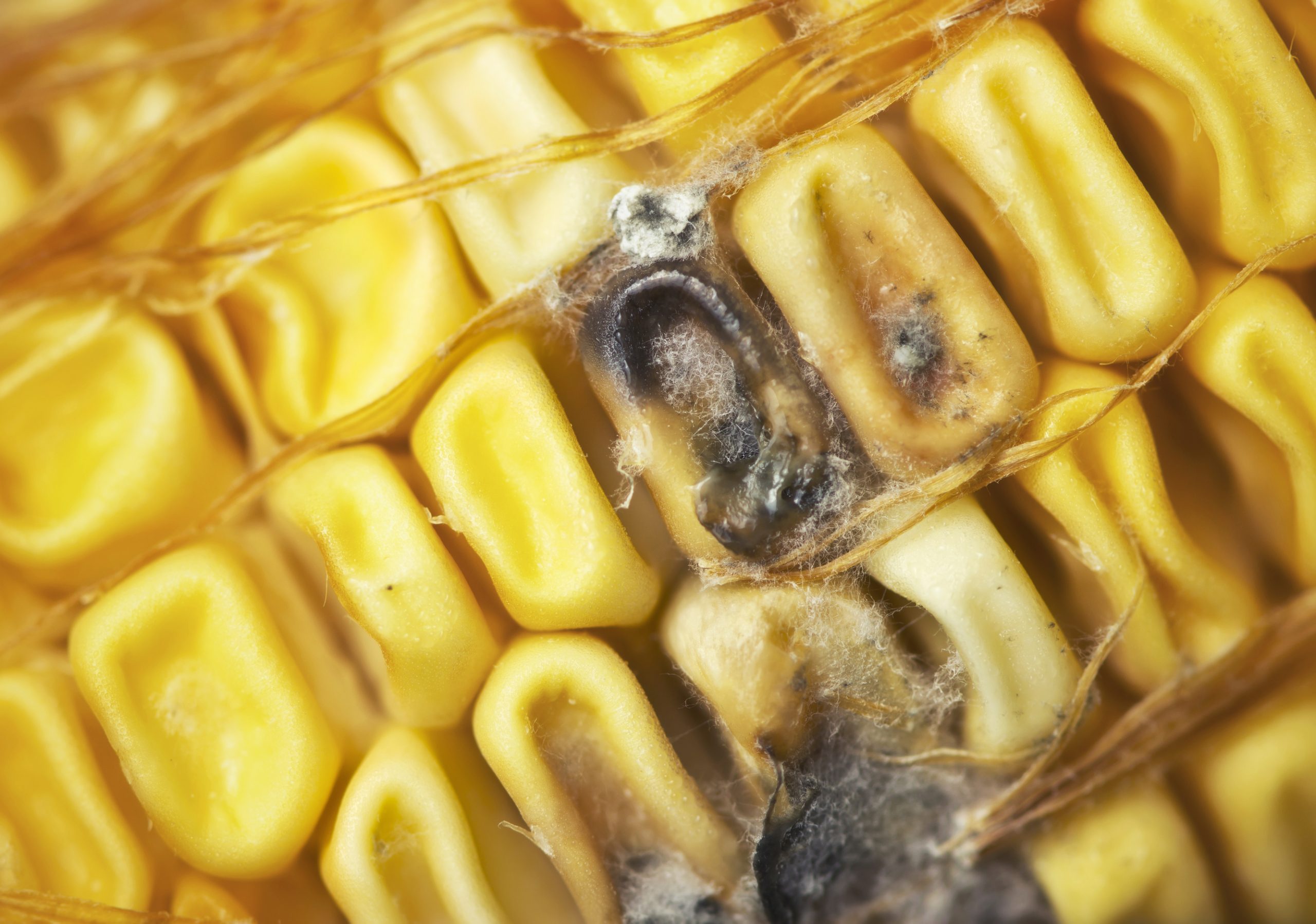The ideal characteristics of a mycotoxin binder

Each harvest season seems to bring with it a variety of challenges that farmers and producers need to tackle in order to safeguard the health of their animals and the quality of their feed. Moulds or fungi and the mycotoxins they produce are an ever present threat and effective mycotoxin management is, now more than ever, fundamental to the success of any farm or feed mill.
There is no doubt in the mind of animal producers that mycotoxins affect the bottom line of their operations. It is important that producers implement a mycotoxin management strategy which considers the challenge as a whole – from risk analysis, to management practices, to effective treatment. One of the most crucial elements of managing the mycotoxin challenge is the inclusion of an effective mycotoxin binder. The question then is how to select a good one.
Although there are many variations in the ideal characteristics of a mycotoxin binder, All About Feed has proposed the following 7:
- Broad-spectrum mycotoxin binding performance.
- Excretion of mycotoxins via faeces.
- Improvement of zootechnical performance.
- Recovery of organ status.
- Recovery of immune status.
- Availability of essential nutrients to the animal.
- The binder is not a growth promoter. Growth promotion may mask mycotoxicosis.
The cornerstone of Alltech’s business is innovation through science. Backed by 18 years of research in mycotoxin binding technologies, our mycotoxin management research team, has continued to drive the development of adsorption technologies that tackle multiple mycotoxins. Based on this experience, we have expanded these seven points to present a full and clear picture to producers.
Broad-spectrum binding performance
Mycotoxins seldom occur in isolation. Alltech’s recent 37+ analysis has indicated that 92% of the samples tested contained two or more mycotoxins. This simultaneous presence of multiple mycotoxins can lead to additive or synergistic interactions. Therefore, an effective mycotoxin binder should adsorb several mycotoxins and not just aflatoxins. This multiple mycotoxin binding capability has been the hallmark of Mycosorb® since its introduction to the market more than 20 years ago.
Excretion of mycotoxins via faeces
When mycotoxins are released from the feed, following digestion in the gastrointestinal tract (GI tract) of animals, free mycotoxins try to enter the blood circulation through intestinal absorption. An effective mycotoxin binder should bind these mycotoxins and trap them as quickly as possible to limit their entry to the circulatory system. The longer this process takes, the more exposed various organs are to mycotoxin toxicity resulting in reduced or compromised performance.
Adsorption is the mechanism behind Mycosorb. This has been demonstrated through various peer-reviewed papers showing the involvement of Van der Waal’s and hydrogen bonds between mycotoxins and beta-1,3 and beta-1,6 glucans. These beta-glucans are the active components of Mycosorb. Figure 1 depicts the interactions between zearalenone and Mycosorb. Radio-labelled studies help to further understand whether or not mycotoxins are excreted out of the body as a result of the inclusion of a mycotoxin binder in the diet.
In a recent study, the effects of Mycosorb on toxicokinetics and balance excretion (urine and faeces) of aflatoxin B1 (AFB1) was tested in rats. The 3Hlabelled mycotoxin was used at low doses. Co-administration of Mycosorb with AFB1 decreased the extent of AFB1 absorption. Concurrently, radioactivity excreted in faeces increased by up to 55% when compared with controls. The excretion in urine, on the other hand, was decreased (p<0.05). the in vivo effect is in agreement with the reported in vitro binding ability. in conclusion, these results indicate that mycosorb could be used to limit the exposure of animals to low dietary levels of selected mycotoxins.
Another recent study evaluated the in vivo effectiveness of Mycosorb to reduce AFB1 absorption in dairy ewes. Ewes were exposed to 60 ppb dietary AFB1 with and without Mycosorb for 21 days. Mycosorb increased faecal excretion of AFB1 up to 156% while urinary excretion of AFM1 decreased.
Improvement in performance
Any product used in commercial feeds should provide sufficient returns for the money spent. Such benefits can be shown only if a given product contains information on peer-reviewed in vivo research. Numerous studies have shown the discrepancies between in vitro binding and in vivo animal performance trials. The biggest strength of Mycosorb is the accumulation of more than 50 peerreviewed in vivo articles showing improvements in zootechnical performance. Such articles describe the benefits of Mycosorb, against not only single mycotoxins, but in various combinations and across various species of animals. Some of these examples are demonstrated in Figures 2, 3 and 4.
Recovery of organ status
Depending on the animal species involved, type of mycotoxin, concentration of mycotoxin(s) and duration of exposure, various organs are affected during mycotoxicosis. Keeping in mind animal welfare and health, the use of mycotoxin binders should negate these negative effects of mycotoxins on various organs.
It is well established that aflatoxins are known to affect liver function while ochratoxins are a group of potent nephrotoxins, contributing to kidney damage. Fumonisins are known to affect the liver as well as immune organs. Trichothecene mycotoxins such as DON and T-2 toxin can damage both the immune system and GI tract. Mycosorb supplementation has been shown to reduce mycotoxin absorption within the animal, thereby negating the damaging effects of mycotoxins on its health.
Recovery of immune status
Most of the mycotoxins that are commonly found in animal feeds have immunosuppressive effects. Zearalenone, to some extent, is an exception. As a result, compromised immune status and the subsequent increased mortality and susceptibility to disease is an underlying effect of most cases of mycotoxicosis. An effective mycotoxin binder should help in recovering the lost vigour of the immune system. This can be in terms of better vaccine response and macrophage activity or recovery in histology of immune organs. The efficacy of Mycosorb against such parameters can be seen in Figure 5.
Availability of essential nutrients
Any dietary mycotoxin binder should be inert in nature; meaning it should not interact with any other nutrients that are supplemented through the feed or produced internally in the body. Historically, clay-based mycotoxin binders were often used at levels as high as 10 kg per tonne of feed. One of the reasons for lowering the inclusion levels of clays was the scientific evidence showing clay’s binding of nutrients (calcium, phosphorous, manganese, zinc, etc.) and drugs. Mycosorb has been shown to bind mycotoxins without any binding of nutrients.
Mycotoxin binders by itself should not have any negative or positive effects on animals. They should work only against mycotoxins and carry mycotoxins out of the body through adsorption. An effective mycotoxin binder should fulfil ideal characteristics proven through science. In addition to those listed above, emphasis should also be on the safety and thermal stability of the product, affinity and capacity of mycotoxin binding; as well as the ability to act quickly within the animal’s body. Such information assists animal producers to make the right choice when considering which mycotoxin binder to include.
[Source: Mycotoxin Special]
Author:
Dr Swamy Haladi, global technical manager, Mycotoxin Management Team, Alltech















